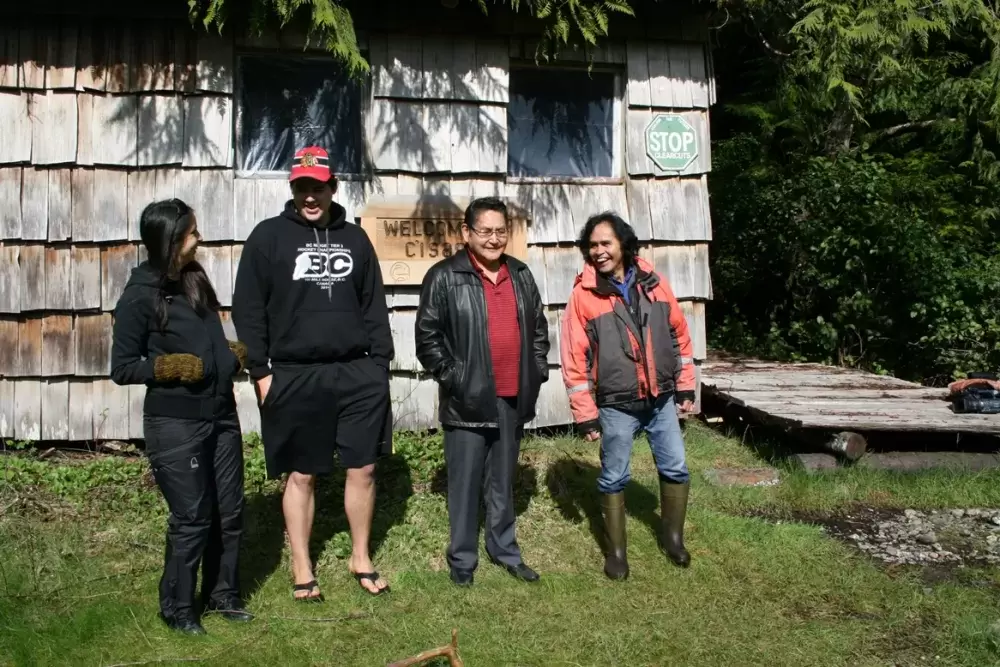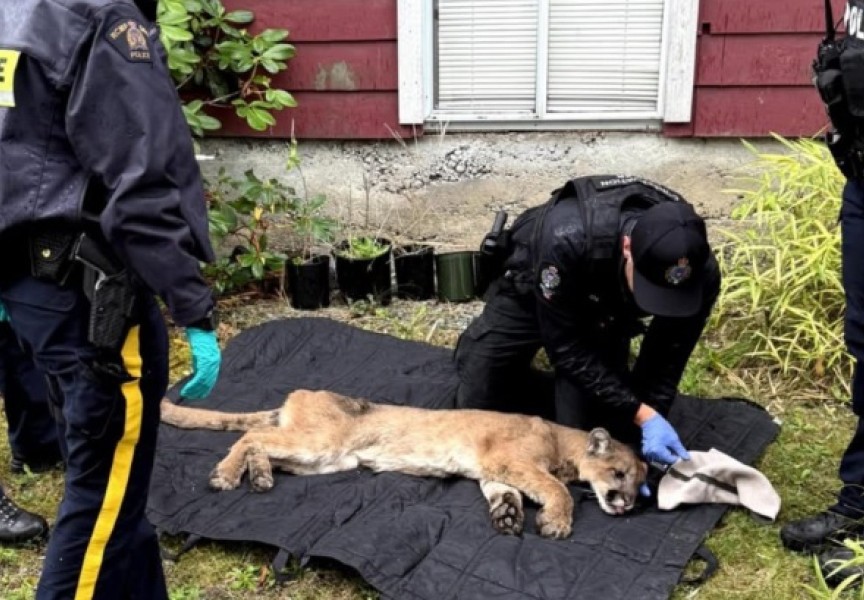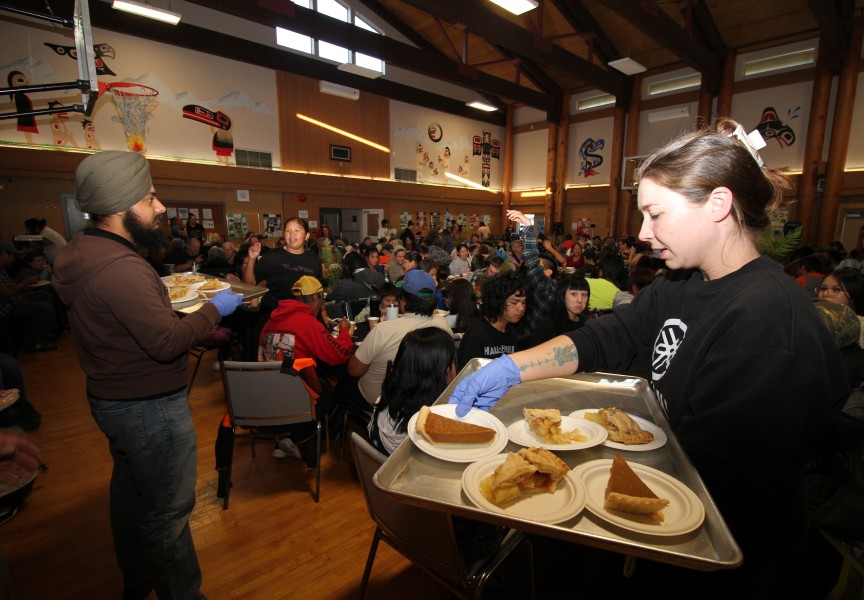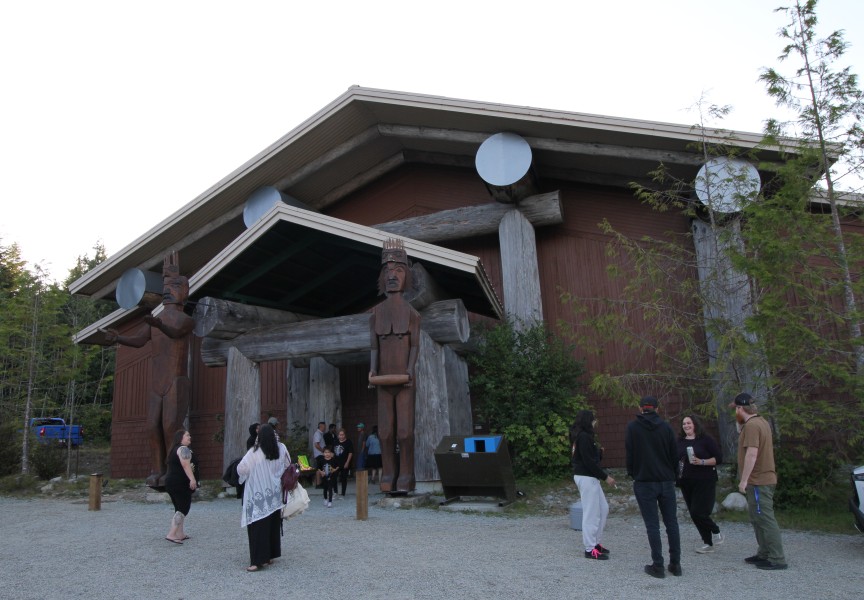On Monday, April 21, Tla-o-qui-aht First Nation Chief Councillor Moses Martin took a party of guests to the site of a confrontation between logging giant MacMillan Bloedel and those opposed to the company’s plans for Meares Island.
It was 30 years ago—April 21, 1984—that Tla-o-qui-aht declared the area a tribal park. Five months later, Martin and hundreds of people, Native and non-Native, stood shoulder to shoulder to stop the clearcut of 90 per cent of the island in Clayoquot Sound.
The cabin that served as a base camp for the protest still stands at the edge of the tideline. A carved sign on the shingle siding reads “Welcome to C’isaqis.”
See photos: http://www.hashilthsa.com/gallery/moses-martin-brings-guests-scene-meares-island-battle
“I spent a lot of nights in this place,” Martin’s nephew Joe said, looking around the interior, which is fitted out with sleeping benches and a cast-iron woodstove.
The first occupation lasted five months, he said. Up to 18 people might seek shelter under the cedar-shake roof when it rained. The one-room cabin (with loft) was built with rough timbers and lumber cut on site from windfall cedar.
“The late Joe McClorey loved splitting shakes, and he directed the younger fellows how to do it. My dad and brother and I were down on the beach carving canoes.”
The canoe building was part of a program of demonstrating cultural practices at the site, Joe explained, to provide visible testimony as to how First Nations people sustain themselves with available resources. Other members gathered traditional medicines and forest foods to reinforce the bounty that is measured beyond board feet of processed lumber.
On April 20, a public celebration of the 30th anniversary of the declaration was held at Tofino Community Centre. (See story: http://www.hashilthsa.com/news/2014-04-22/tla-o-qui-aht-tofino-celebrate-tribal-park-declaration ) Moses described one of the confrontations that took place between the RCMP detachment commander and the now late Nuu-chah-nulth Tribal Council leader George Watts.
“He said, ‘I’ve got room to put a thousand Indians in my jail,’” Martin recalled. “George said, ‘You go ahead. We’ll bring a thousand more.’”
Martin said he worked hard to ensure that when the MacMillan Bloedel advance team arrived at C’isaqis, there wouldn’t be any fireworks or violence.
“I talk a lot about building relationships. It’s so much easier to work with people when you’re not angry,” he said. “I’ve done the other, too; hammered my fist on the table and said, ‘We want this, lock stock and barrel, and we won’t accept less.’ I’ve never seen that work, and I long ago decided to try something else.”
The MB boats entered the bay at C’isaqis in November 1984.
Martin had already counselled the supporters that this would be a peaceful demonstration. That was a directive from the Tyee Ha’wilth, he added.
“This is about where I stood,” he told Ha-Shilth-Sa, standing in front of the weather-beaten cabin. “When the boats arrived I had to decide whether we would go in the water and fend them off, or welcome them ashore. I chose the latter. I said, ‘You’re welcome to visit our park, but leave your saws in the boat.’”
The MB team included several high-ranking officials, along with the engineers and a falling crew to perform the initial site clearing – exactly where the protest cabin stood. This was unknown territory for the MB team, Martin said.
“They asked us for some names. They told us we were going to be charged. I think I was one of the first ones that gave my name, along with Mike [Mullin] and Lee Hilberg,” Moses said, naming two of the non-Native Friends of Clayoquot Sound (FOCS) members.
“It was like we planned. Everything was peaceful. No one was going to start anything physical. If we were going to be taken away and arrested, that’s what was going to happen.”
Asked what his highlight was of that day, Martin said it was the realization that the coalition of First Nations and environmentalists had weathered the first confrontation and had held together.
“In those days we had already identified that we could work with the non-Native community. That’s actually the most rewarding thing. We established that relationship and we’ve just built on it ever since.”
That the coalition forged in 1984 ultimately won a major victory for First Nations and for the environment is now a matter of record. Martin said the anniversary celebration was, in part, a pre-emptive demonstration of strength in advance of an application by Imperial Metals to conduct a test-survey for a gold mining operation, known as Fandora, in the Tranquil Valley watershed, which has now been declared a Tribal Park.
Tla-o-qui-aht First Nation used the occasion of the 30th anniversary of the Meares Island Tribal Park Declaration to expand the protected areas across their entire traditional territory, which includes the district municipality of Tofino.
The timing of any protest action is still very much up in the air, but FOCS and Tla-o-qui-aht are poised to take action, according to FOCS volunteer Gillian Nicol.
“The problem is, we will not know when they plan to go in until they make an application to the province, and they haven’t done that yet,” she explained. “We would not be notified, so we have to make inquiries to the province.”
Lawyer Patrick Canning, who has practiced in Tofino for the past several years, took part in Monday’s visit. Canning said he is basically on standby in case Imperial Metals moves ahead with an application.
“It’s pretty well known that I have been working with Tla-o-qui-aht on Fandora,” he said.
Should Imperial Metals be successful in its application to evaluate the Tranquil Valley site, it would mean building roads and hauling in heavy equipment, including excavators and test-drilling rigs.
Martin said the goal for FOCS and Tla-o-qui-aht is, first, to discourage the company from proceeding to that stage by demonstrating the level of opposition that the operation would face.
Should that fail, the coalition would take action on the ground to prevent the advance exploration team from establishing a site.
Martin said Tla-o-qui-aht has already considered the potential benefits of any mining operation – even one conducted to the highest environmental standards – and concluded that the risks outweigh the rewards.
As Saya Masso, Tla-o-qui-aht band councillor and resource manager, expressed in an April 21 media release: “We have just finished a tribal park planning initiative that sustains jobs for 500 years, not just 10 years of jobs and 500 years of impact.”
That Tla-o-qui-aht is opposed to the proposed mine, in any form, is now a matter of public record.
“They have already been put on notice that we don’t want any mining on our territory,” Martin said.
Photos from April 20, 2014 celebration: http://www.hashilthsa.com/gallery/30-years-later-clayoquot-sound-protests-meares-island
Related:
http://www.hashilthsa.com/news/2014-04-22/tla-o-qui-aht-tofino-celebrate-tribal-park-declaration







